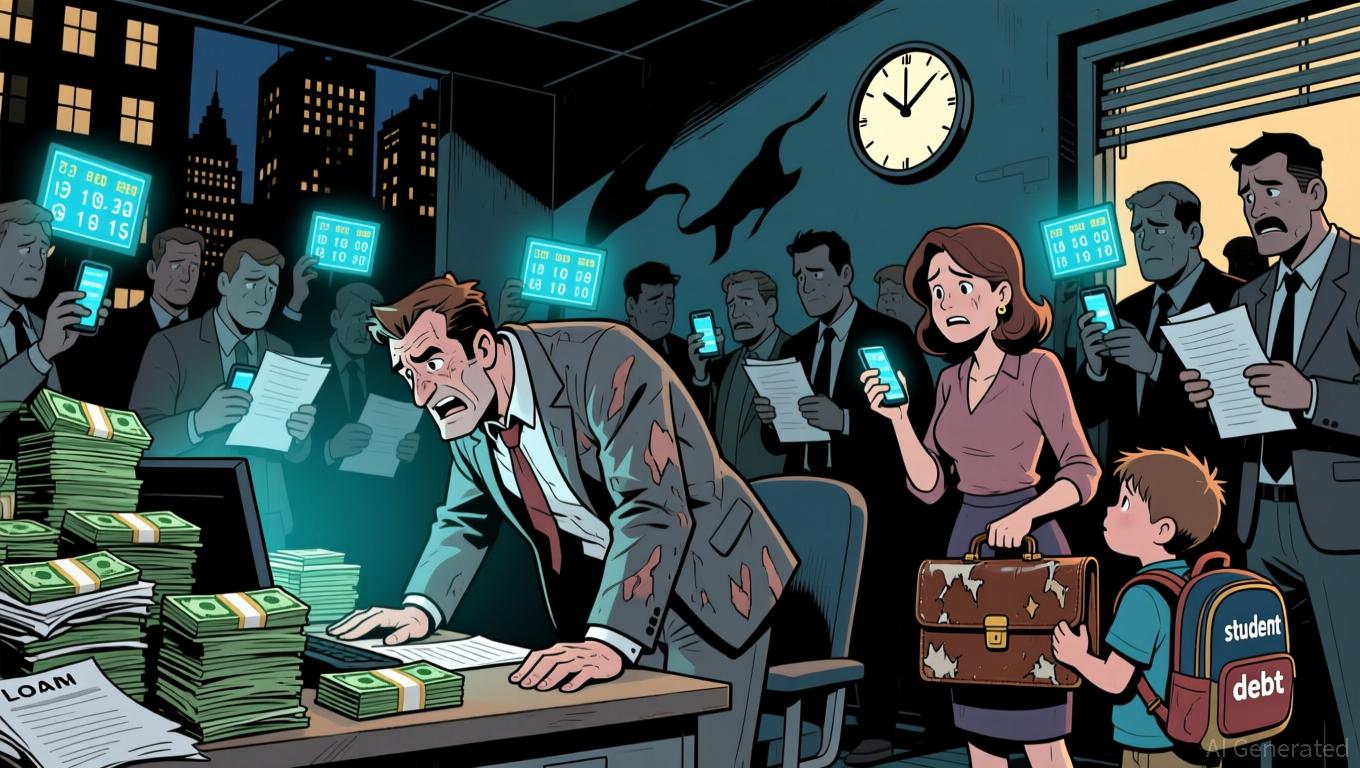LUNA Drops 13.02% Over the Past Week as Recovery Efforts Continue After Collapse
- LUNA dropped 13.02% in 7 days as of Nov 6, 2025, amid ongoing post-2022 collapse recovery efforts. - Terra 2.0 rebranded from algorithmic stablecoin model to governance-driven DeFi and payment solutions. - Financial analysts monitor LUNA's volatility as a case study for blockchain governance and ecosystem resilience. - The token's 80% annual price drop highlights risks in algorithmic models and decentralized finance adaptation.
As of NOV 6 2025,
LUNA, which serves as the primary token for the
Initially introduced within the
In response, Terra 2.0 was introduced—a revamped blockchain that abandoned the algorithmic stablecoin approach in favor of a governance-focused ecosystem. The updated LUNA now supports staking and protocol governance, but it no longer functions as a stabilizer for stablecoins. The project’s emphasis has shifted to decentralized finance (DeFi), payment infrastructure, and community-driven growth.
Even with these foundational changes, LUNA’s trading patterns continue to draw attention from market analysts. The 13.02% decline over the week ending NOV 6 2025 highlights persistent market volatility, though daily trading has remained relatively steady. Observers are watching for signs of a sustained rebound, especially as the DeFi sector and cross-border payment initiatives within the network expand.
Terra’s evolution has broader significance beyond its native asset. The platform has become a proving ground for blockchain governance, token economics, and the durability of decentralized finance. Analysts use Terra as a reference point to assess the effectiveness of algorithmic models, governance frameworks, and strategies for ecosystem growth.
Although the network’s move from a stablecoin-based system to one centered on decentralized applications (DApps) has not erased the memory of its 2022 collapse, it has made Terra an important case study. Changes in LUNA’s price and governance are closely monitored as reflections of user confidence, market outlook, and the network’s ability to adapt technologically.
Backtest Hypothesis
To assess how the Terra ecosystem has recovered since its crisis, a backtesting strategy can be employed to review LUNA’s historical performance during significant market downturns. Typically, an event is defined as any day when the closing price drops by at least 10% compared to the previous day. By pinpointing all such occurrences from 2022 to 2025, one can track the token’s recovery patterns and volatility.
This event-based analysis can be extended to LUNA and other digital assets for comparison. It provides a detailed look at how LUNA reacted to abrupt market declines, the duration of its recovery, and whether its post-crisis behavior diverges from trends seen before 2022. The backtest also offers insights into the effects of governance reforms and ecosystem changes introduced with Terra 2.0.
Disclaimer: The content of this article solely reflects the author's opinion and does not represent the platform in any capacity. This article is not intended to serve as a reference for making investment decisions.
You may also like
Supreme Court Decision on Tariffs May Require $140 Billion in Refunds and Prompt Federal Reserve to Lower Rates
- UBS warns a Supreme Court ruling against Trump's tariffs could force $140B refunds, straining U.S. fiscal resources and prompting potential Fed rate cuts. - The refunds stem from 39% Swiss tariffs deemed potentially unlawful, with fiscal impact equivalent to 7.9% of 2025's projected budget deficit. - Legal challenges highlight executive overreach risks, while reduced tariffs could boost consumer spending and ease inflation, creating room for Fed easing. - Swiss business leaders have lobbied Trump to lowe

Ethereum Updates: TRON's GreatVoyage: Strengthening USDT's $122B Network to Compete with Ethereum

Arm's Low-Power Architectures Overcome AI Energy Constraints, Fuel 34% Growth in Revenue
- Arm Holdings reported $1.14B Q3 revenue, 34% YoY growth surpassing forecasts, driven by AI/data center demand. - Royalty revenue rose 21% to $620M while licensing revenue jumped 56% to $515M, reflecting strong IP adoption. - Strategic shift to develop full-chip solutions via Compute Sub Systems aims to compete with Nvidia/Amazon in AI hardware. - Parent company SoftBank explored Arm-Marvell merger to strengthen AI infrastructure, highlighting industry consolidation trends. - 20 "buy" ratings and $155 pri

Fed Faces a Choice: Boost Growth or Curb Mounting Debt?
- U.S. household debt hit $18.59 trillion in Q3 2025, driven by rising credit card, student loan, and home equity debt with delinquency rates at multi-year highs. - The Fed initiated rate cuts amid slowing job growth but faces a dilemma: easing economic strain risks inflating a consumer debt bubble while tightening worsens defaults. - Retailers, banks, and auto lenders face fallout as discretionary spending declines and loan defaults rise, while essential goods and debt collectors see increased demand. - P
